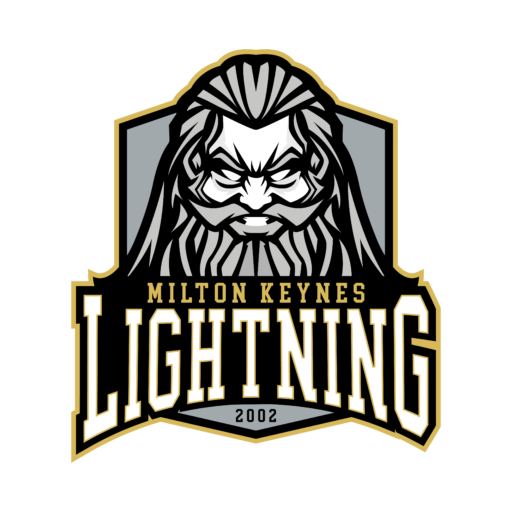Whether you’re new to the rink or a seasoned fan with a question or two, we’re here to help you learn more about the fast-paced, thrilling world of ice hockey! As one of the world’s fastest team sport, ice hockey combines speed, skill, and physicality to create an action-packed experience for players and fans alike. Here are the basics of Ice Hockey you need to know…

Objective of the Game
Like most sports, the goal in hockey is simple: score more goals than the opposing team! Each goal is recorded and displayed on the scoreboard — similar to football. But instead of a ball, ice hockey is played with a small rubber disc called a puck.
Understanding Player Positions in Ice Hockey
Each hockey team is allowed six players on the ice at once, including the goalie (also known as the netminder). A full team typically has around 22 players: 20 skaters and two netminders, with players rotating in and out of the game. Players not currently in play sit on the team’s bench, located beside the rink. They enter the ice by hopping over the boards or through a door. Each player usually stays on the ice for just under a minute, in what’s called a shift. Shifts are kept short because ice hockey is an intense, high-energy sport – rotating players quickly keeps everyone fresh and ready for action!
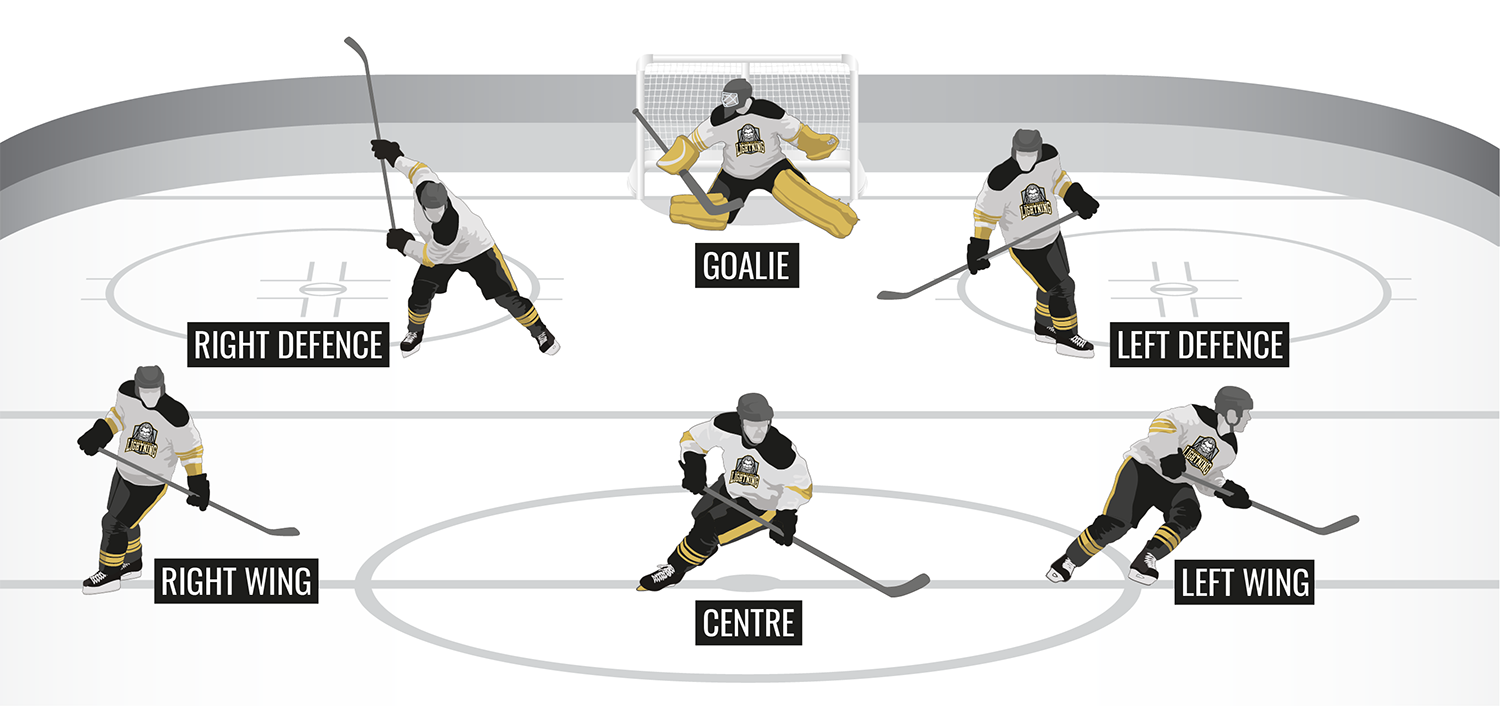
There are six main positions, each with unique responsibilities:
Goalie (Netminder) – The last line of defence, responsible for blocking shots to prevent the puck from entering their team’s net.
Defence (Left & Right) – Defenders focus on stopping the opposing team’s forwards and protecting their goalie, particularly when their team doesn’t have possession.
Forward (Centre) – The centre takes face-offs, aiming to gain puck control, and plays both offensive and defensive roles across the centre of the ice.
Forward (Left & Right Wing) – Wingers often play along the sides and are key goal scorers. They also cover defensive duties, balancing both offense and defence as the game demands.
Timings
An ice hockey game consists of three 20-minute periods. Including stoppages and intermissions, games usually last about 2 ½ hours. If the score is tied at the end of regular time, the game continues into overtime. Both teams earn at least one point for reaching overtime, and the team that scores the winning goal in overtime earns an extra point.
Overtime periods last 5 minutes, with each team limited to 3 skaters (instead of the usual 5). If no winning goal is scored, the game will continue to a penalty shootout to decide the winner.
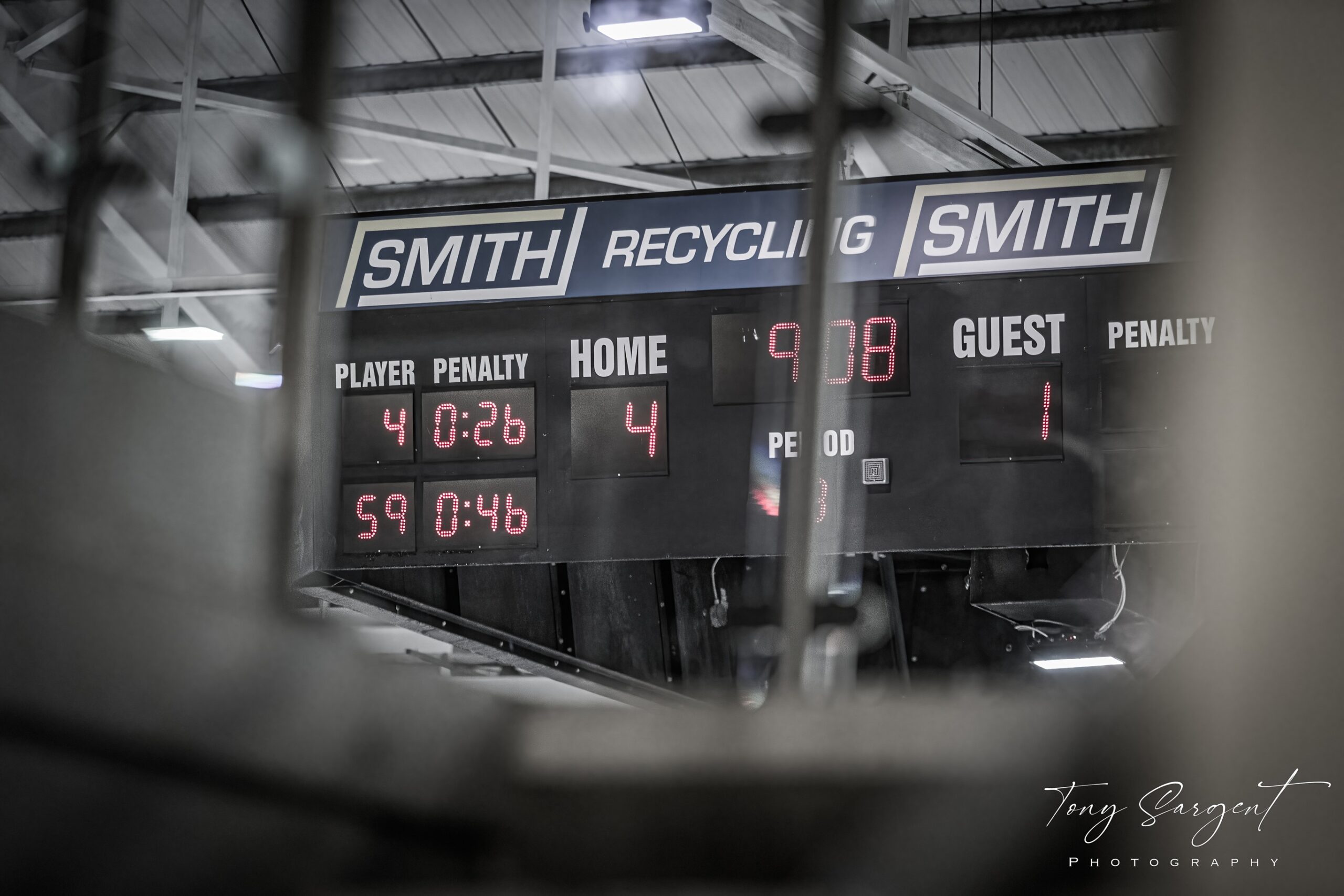

Equipment
In a lightning-fast, high contact sport like ice hockey, safety is one of the most important factors. Players must wear the correct equipment whilst playing, in order to protect themselves and allow them to play to the best of their ability.
Skates
Netminders also require additional protective items such as a chest protector, blocker, and catching glove.
The Officials
In each game, up to four officials are on the ice — two referees and two linesmen. Referees wear orange armbands for easy identification and are responsible for overseeing the game and enforcing the rules. Linesmen support the referees by calling infractions such as icing, offsides, and too many players on the ice.
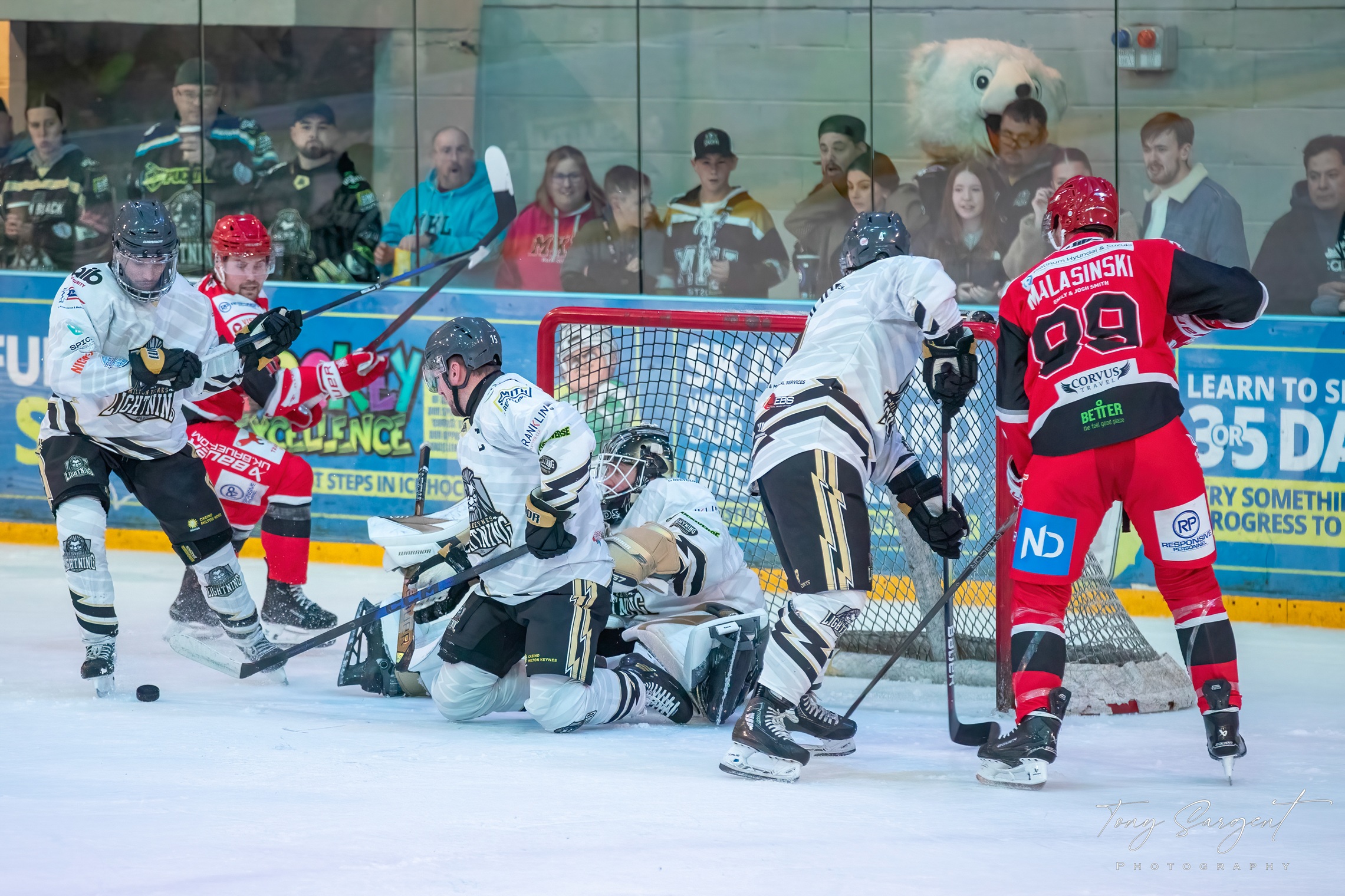
The world’s greatest and most exciting game is easy to follow once you know a few basic rules and practices. Here is a brief guide to the essential ice hockey rules!
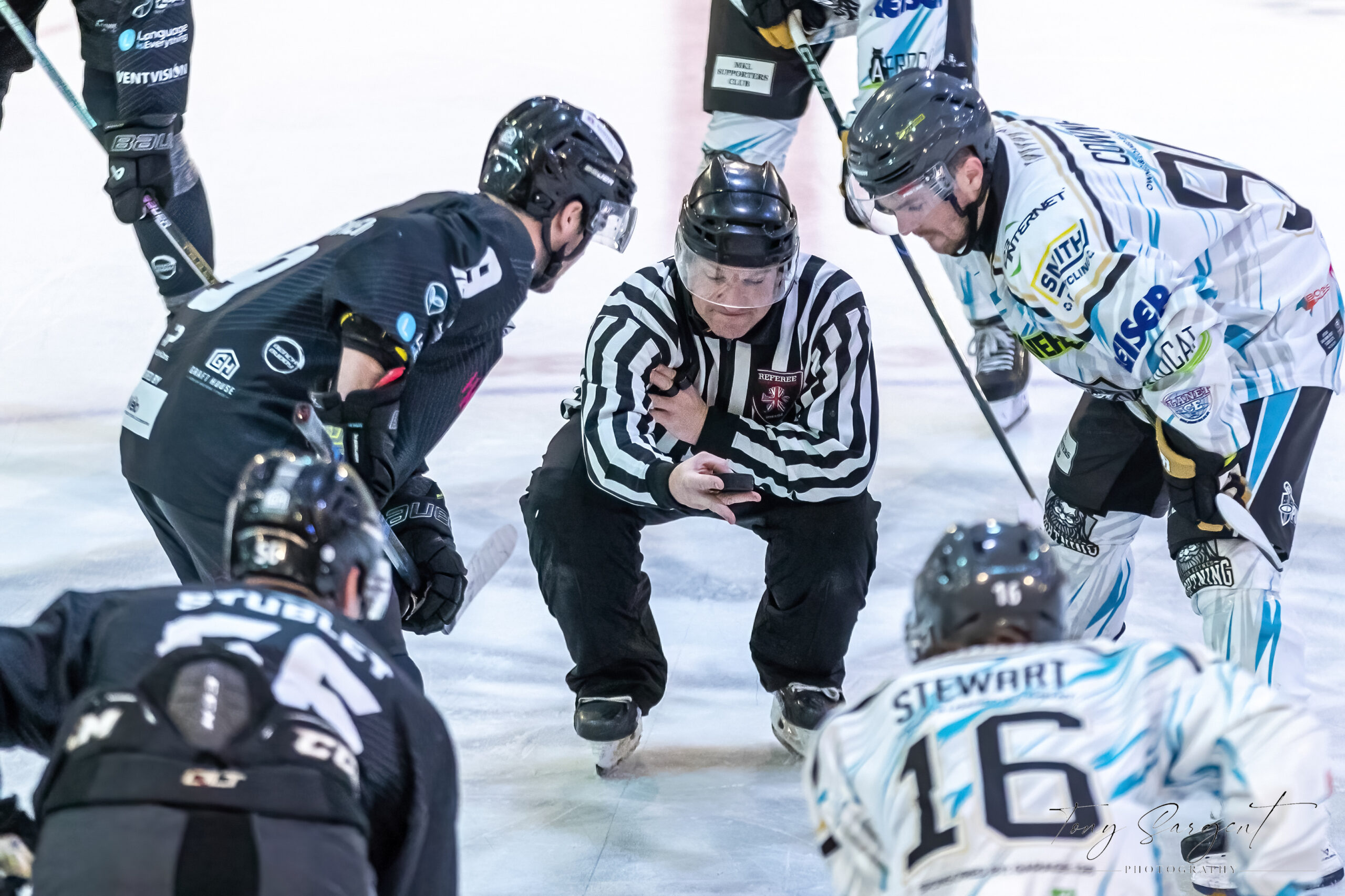
Face-offs
In ice hockey, face-offs are a frequent part of gameplay, occurring at the start of each period and following every stoppage. Players take up set positions around one of five face-off circles on the ice, with only two players allowed inside the circle during the face-off itself.
Offside
Offside occurs when a member of the attacking team crosses over the defending team’s blue line, before the puck. The position of the player’s skate — and not that of his stick — is the determining factor. If both skates are over the blueline before the puck, the player is offside. If he has only one skate over the blueline and one on it, he is onside.

Icing
Icing is when the defending team shoots the puck down the ice across two red lines (the red centre line and the goal line), without it touching another player. Icing is not permitted when teams are at equal strength or on the power play. When this occurs the game is stopped and a face-off takes place in the defending teams zone.
Icing the puck is not called:
- If the goalie leaves the crease to play the puck, even if he does not touch the puck
- If an official rules an opposing player could have played the puck before it crossed the red goal line
- An official may waive off the icing call if he deems it was an attempted pass

Penalties
Penalties are how players face consequences for improper use of their sticks and bodies. When a player receives a penalty, they must serve time in the penalty box (or “sin bin”), reducing their team’s numbers on the ice.
Penalties vary in severity:
– Minor penalties are the most common and result in two minutes in the box.
– Major penalties and misconducts cover more serious offenses and can lead to 5, 10, or even the entire game off the ice.
While a player serves a penalty, the opposing team gains a temporary man advantage known as a “power play.” This advantage lasts for the penalty’s duration, although in minor penalties, the power play ends if the opposing team scores.

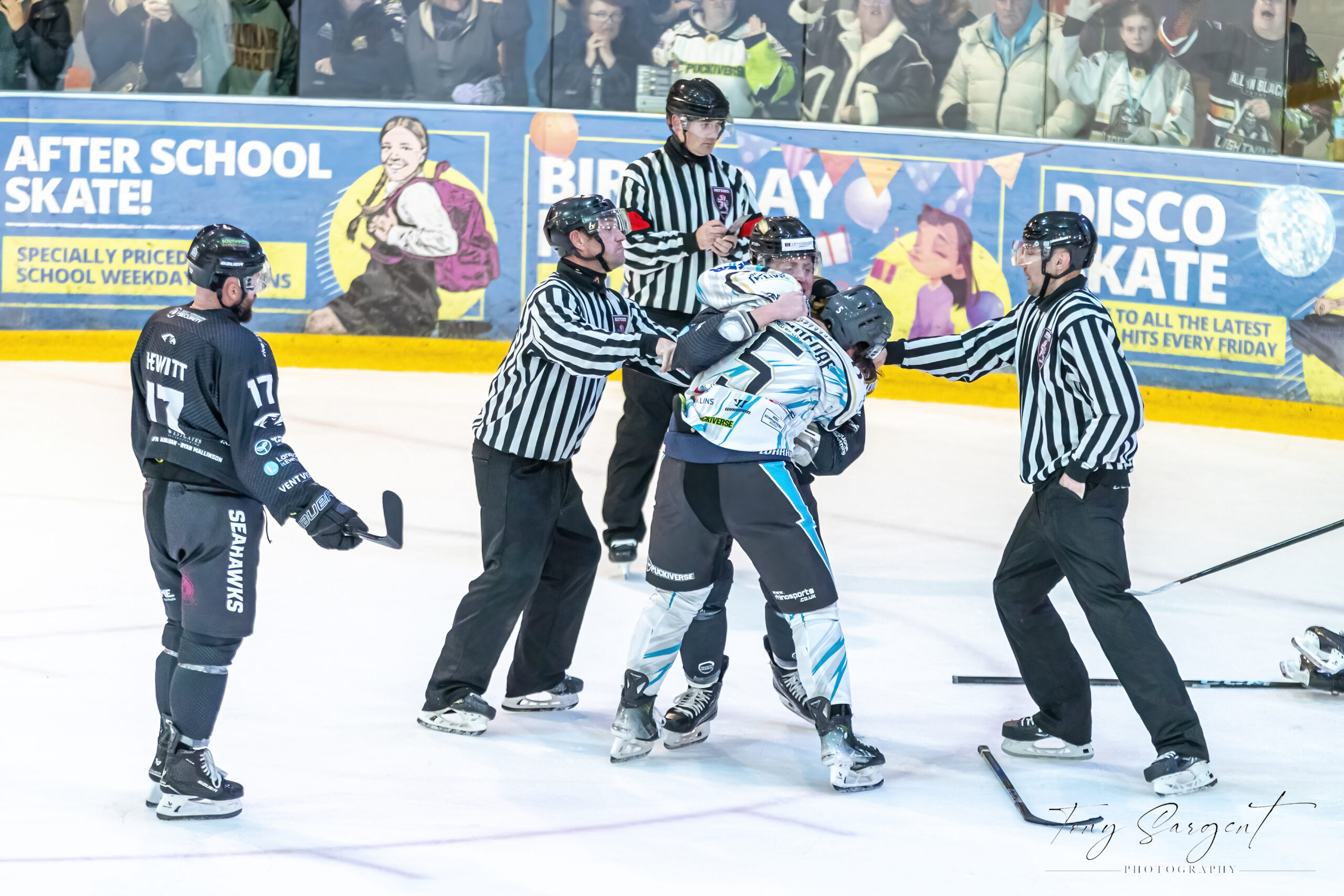

Here are some common reasons for penalties:
Hooking – Using the stick to hook an opponent, impeding their movement.
High Sticking – Playing with the stick above shoulder height or the goal crossbar.
Tripping – Using a stick or body part to make an opponent fall.
Interference – Blocking or obstructing a player not in possession of the puck.
Slashing – Swinging their stick at an opponent, regardless of whether contact is made.
Spearing – Jabbing or poking at an opponent with a stick.
Charging – Taking over three strides to violently hit an opponent.
Holding – Grabbing an opponent to hold them back.
Roughing – Striking an opponent with a hand or fist.
Fighting – Physical altercations that involve punches.
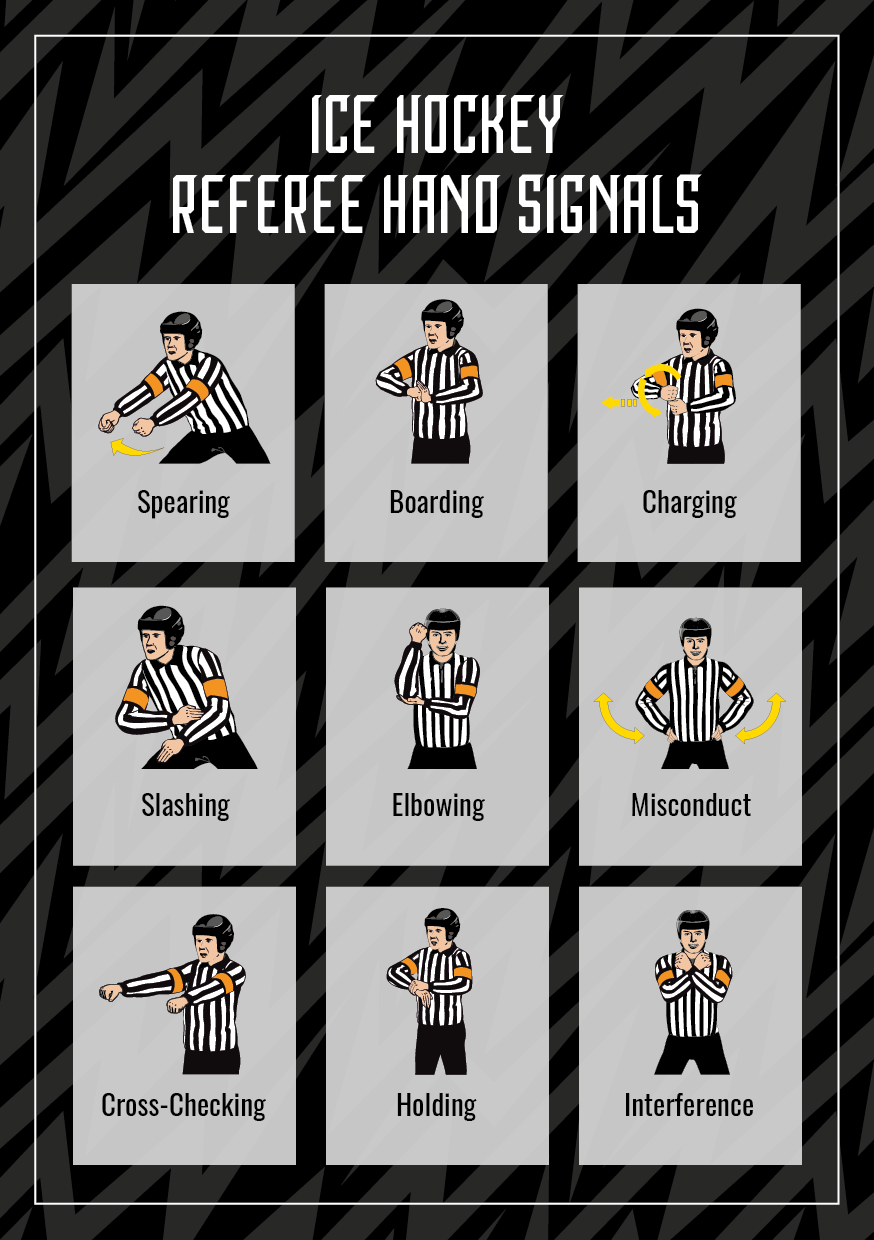
Now that you’ve learned more about the most exhilarating, fastest team sport in the world… what are you waiting for? Grab your tickets today and experience the excitement of an MK Lightning game first-hand!

